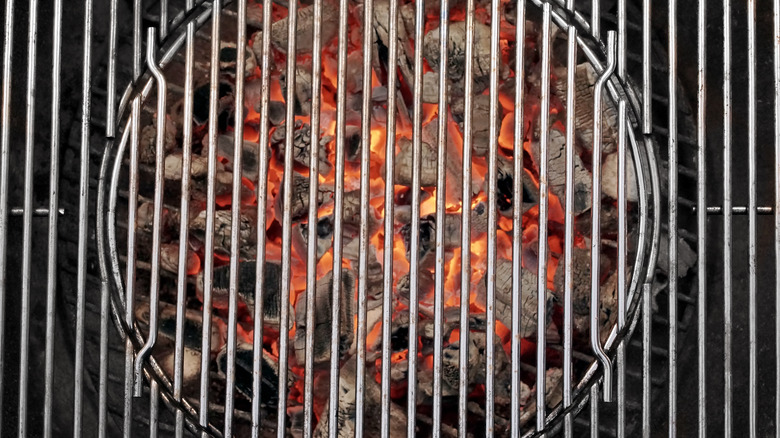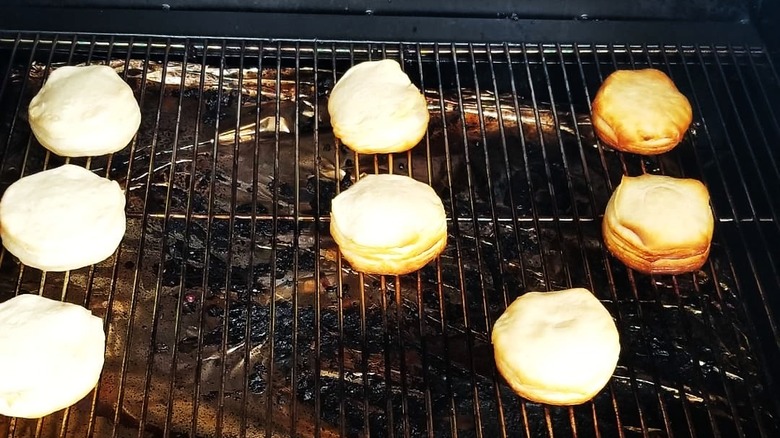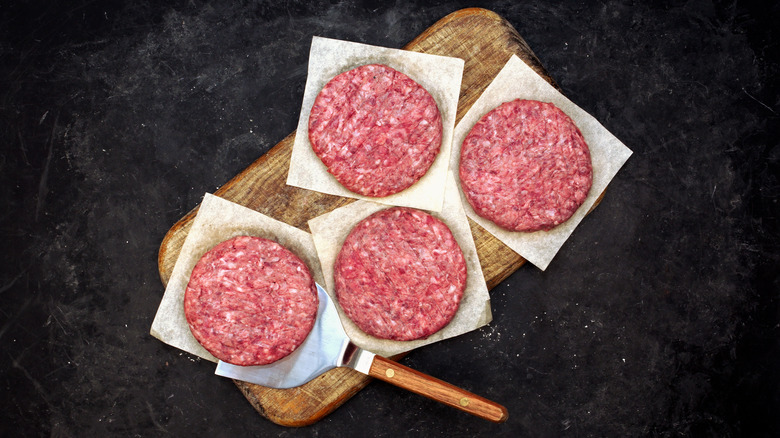Why Do Cold Spots Pop Up On Your Grill?
Few things can ruin an avid griller's day like a rogue cold spot. You bought the high-end Wagyu patties, prepped them the way the celebrity chef on TV did, and even splurged on the fancy charcoal at the grocery store. Despite this, something isn't right. The burger in the middle is overcooked, the one next to it is too rare, and the burger on the side is perfectly cooked.
Cold spots can be any grill's silent saboteur. However, they don't need to dictate the final product's quality just because they're inconvenient. Knowing where your cold spots are, why they happen, and how to work around them can mean the difference between a decent cheeseburger and the best one you've ever grilled yourself. This knowledge is essential, as frustrating as varied grilling surfaces can be.
Knowing your grill is not only more valuable than owning the most expensive grill, but it also teaches you what to do when new cold spots arise and how to prevent them in the future. It does not matter whether you are working with a charcoal grill, electric plug-in grill, or handmade fire pit: Cold spots are a universal grilling nuisance. The causes of cold spots vary from model to model, but every preventative measure you take makes a difference. Running a quick diagnostic test is cheap and easy to accomplish, and your tastebuds will appreciate it, too.
Spotting your grill's cold spots
According to Oklahoma Joe's, one tried and true way to hunt down hot and cold zones on your grill is to open a can of uncooked biscuit dough. Cut the dough into small pieces and measure how they cook across the grill's surface. Pay extra close attention to areas near exhaust pipes, charcoal, and vents. For charcoal, in particular, make sure that the coals distribute evenly, and on gas, make sure that there is no evidence of blockages or technical issues that might cause cold spots or even hinder the test itself.
After 20 minutes, the biscuits should be ready, and you can see where hot and cold spots arise. Properly heated biscuits will have a golden brown color. On the other hand, undercooked biscuits will look pale orange, yellow, or in extreme cases, completely white and raw. If you don't have biscuit mix, Eat This, Not That note several chefs, like James Beard Award winner David Joachim, use white bread to conduct a similar search.
Once you pinpoint where your cold spots happen, the next step is figuring out the cause and adjusting to the knowledge.
Diagnosing and using cool spots
If one area runs colder than others, check the grate for unwanted residue from any previous grilling. A quick Google search can also help you decide if it's a common problem with the model itself. If that's not the case, check whether any vents or physical barriers prevent the heat from spreading where it needs to go. If problems persist, run multiple tests and see if they always stem from the same areas.
On gas grills, as Food Network explains, the heat shields responsible for evenly diffusing the flames can produce an issue of their own. These metal plates, which slope together into a roof shape, can wear down (causing them not to direct heat as efficiently) or become blackened with burnt-on food residue, which can flare up and burn your meal. Keep an eye out for evidence of either during your tests.
With enough understanding of the basics of grilling science, the cool spots may even work to your advantage. Is one burger cooking faster than the others? Put it over the cool spot. Got a good char but worried that it will overcook? Place it over the cool spot. Is one piece of food cooking well but not achieving the optimal sear? Move it to a hotter section. Mastering your grill and learning how to cope with unexpected cool spots will make you a hit at your next neighborhood cookout, family birthday party, or even a simple Wednesday evening dinner by yourself.


